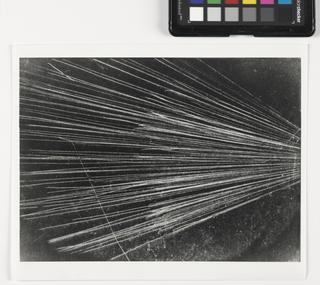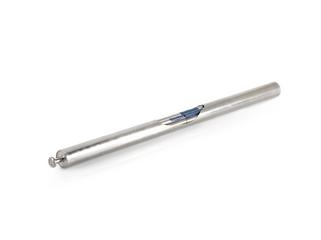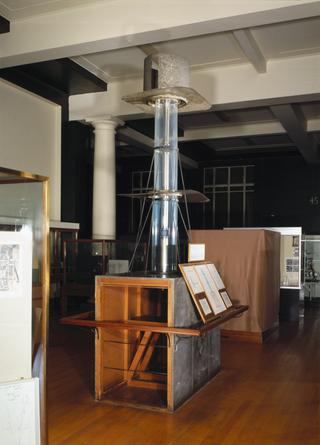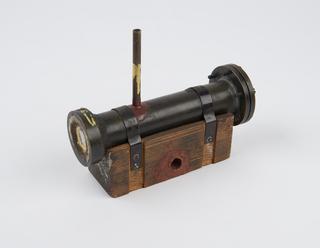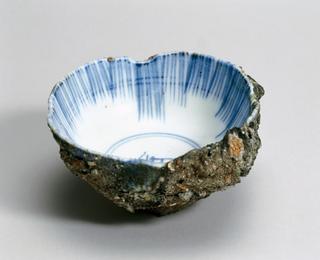
Shaped glass tube used by Irène Joliot-Curie & Frédéric Joliot in an experiment on artificial radioactivity in 1934. Contained boron nitride that under alpha particle bombardment of the boron nuclide became nitrogen 13 nuclei.
Among the most remarkable developments in nuclear physics during the early 1930s was the discovery of artificial radioactivity. Appropriately it was made by Irène Joliot-Curie (1897-1956) and Frédéric Joliot (1900-58), the daughter and son-in-law of Marie Curie. Marie Curie had studied naturally-occurring radioactive materials; it fell to the next generation to investigate processes by which materials could become radioactive. During a series of experiments they uncovered a new nuclear process - positron emission - analogous to the emission of an electron by the nucleus, the process of beta decay discovered at the turn of the century. To confirm this they took a small U-shaped tube, filled it with a boron compound and sealed the tube. The boron sample was bombarded with alpha particles (helium nuclei) to convert some boron nuclei into nuclei of nitrogen. According to Joliot and Curie, these nitrogen nuclei would now emit positrons. The clever twist to their experiment was to separate this nitrogen from the boron - or anything else that might be present - and to show that it was only the nitrogen that emitted the positrons. By the end, all the radioactivity had left the boron compound and was carried with the nitrogen. In 1935 they were awarded the Nobel Prize for this work.
Details
- Category:
- Nuclear Physics
- Collection:
- Sir Henry Wellcome's Museum Collection
- Object Number:
- 1982-548
- Measurements:
-
overall: 85 x 91 x 30 mm
- type:
- experimental equipment
- credit:
- On loan from the Wellcome Trust
